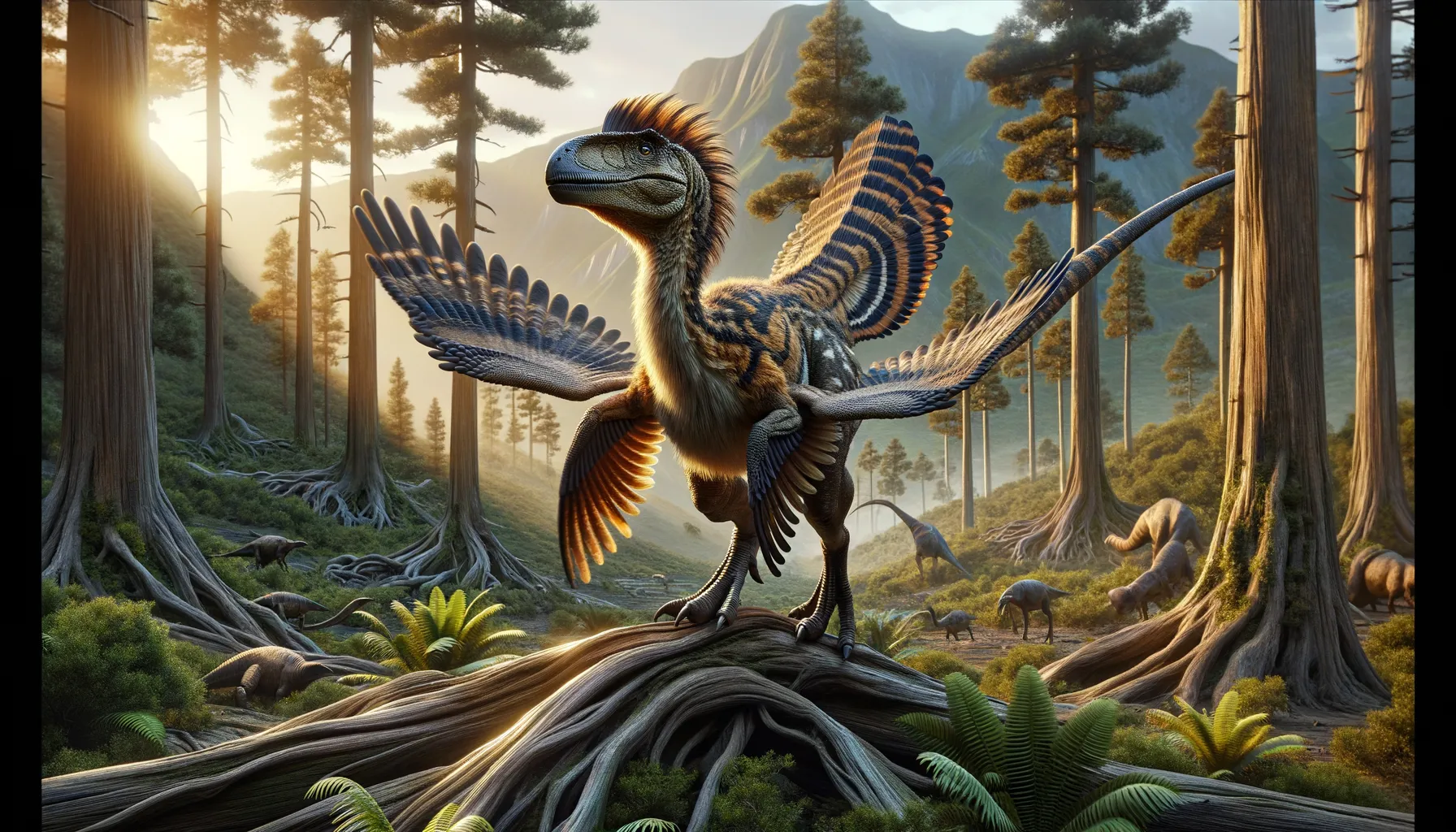
Huaxiagnathus
Small in size, mighty in motion!
Period
Cretaceous
Length
Approximately 1.5 meters (5 feet) long.
Height
Stood about 0.5 meters (1.6 feet) tall.
Weight
Roughly 3 kg (6.6 lbs).
Huaxiagnathus was a small, nimble dinosaur that roamed what is now China during the Early Cretaceous period. This theropod, part of the coelurosaur group, was a carnivore known for its agility and lightweight build. Approximately the size of a turkey, Huaxiagnathus is an important species for understanding the evolution of theropods, particularly those that are closely related to birds.
Diet
Huaxiagnathus was a carnivore, primarily feeding on small vertebrates and possibly insects. Its sharp teeth and agile build suggest it was well-adapted to catching quick-moving prey.
Hunting
This dinosaur likely relied on its speed and agility to ambush or chase down small prey. Its keen senses would have been crucial for detecting movement, aiding its hunting success.
Environmental challenges
Huaxiagnathus lived during a time of significant volcanic activity, which could have impacted its habitat. Competing for food resources with other small carnivores would have been a constant challenge. Flash floods in its riverine and forested environments could have posed survival threats.
Speed
Moderately quick for its small size.
Lifespan
Likely around 10 to 15 years.
First discovery
Found in Liaoning Province, China in 1993.
Fun Facts
- Huaxiagnathus was a small dinosaur, roughly the size of a turkey.
- It lived during the Early Cretaceous period, about 120 million years ago.
- Huaxiagnathus had long legs, suggesting it was a fast runner.
- Its name means 'Huaxi jaw,' referring to the region in China where it was found.
- This dinosaur is part of the Compsognathidae family, which includes some of the smallest known dinosaurs.
- Huaxiagnathus was likely a carnivore, feeding on small animals and insects.
- Despite its small size, Huaxiagnathus probably had a sharp bite thanks to its teeth adapted for catching prey.
Growth and Development
Like many small theropods, Huaxiagnathus would have grown rapidly, quickly reaching near adult size. Early development stages would likely have been vulnerable to predators, emphasizing the need for quick independent movement and hiding skills.
Habitat
Huaxiagnathus thrived in a warm, temperate climate with lush vegetation. Its environment included forests and river valleys, abundant with small vertebrates and insects, providing ample food sources. The landscape was influenced by volcanic activity, shaping its ecosystem's dynamics.
Interaction with other species
Huaxiagnathus would have encountered other small theropods, competition for food might have led to aggressive interactions. If food was plentiful, it might have coexisted with other species, engaging in niche partitioning. Its small size made it vulnerable to larger predators, necessitating stealth and speed.
Natural lifespan
Typically, it would live around 10 to 15 years.
Reproduction
Huaxiagnathus was egg-laying, like most dinosaurs. Clutches likely contained several eggs, with parental care levels unknown but potentially similar to other theropods. Given its small size, rapid maturation would help young Huaxiagnathus avoid predation.
Social behaviour
While direct evidence is scarce, similar species suggest Huaxiagnathus might have operated alone while hunting. However, it may have formed small groups for protection or breeding. Any social structure would have been influenced by food availability and predation threats.
Fossil locations
The primary discovery site for Huaxiagnathus fossils is in the Liaoning Province of China. This region is renowned for an abundance of early Cretaceous fossils, providing rich insights into the diversity of life during this era. Fossils found here greatly contribute to our understanding of feathered dinosaurs.
